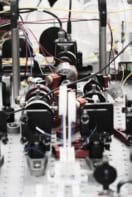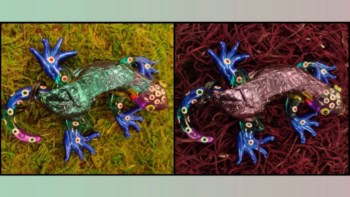The invention of blue semiconductor lasers made from gallium nitride has been one of the key technological breakthroughs of the decade. Now an international team of researchers from Japan, Germany and Italy have built the first vertical cavity surface-emitting laser (VSCEL) that emits blue light at room temperature (T Someya et al 1999 Science 285 1905). The new device could significantly improve the performance of various optical data storage and laser printing devices.
Most semiconductor lasers emit light from the edge of the active laser region. However, in the VSCEL geometry light is emitted from the top of the device. This can reduce the threshold current needed to achieve laser action and can improve the optical quality of the output beam. The new device consists of an indium gallium nitride multiple quantum well region (the active region) sandwiched between two distributed Bragg reflectors, which form the laser cavity. The 52 layers in the active region are 3 and 5 nanometres thick.
The main challenge was to grow the first Bragg layer, which consists of alternate layers of gallium nitride and aluminium gallium nitride. Gallium nitride and aluminium nitride have different thermal expansion co-efficients and lattice constants, which make it difficult to grow a high-quality multilayer structure on which the active layer can then be grown. Metal organic chemical vapour deposition was used to grow this Bragg layer.
The team used a dye laser with a peak wavelength of 367 nanometres to pump the device, and lasing action was observed at 399 nanometres. The next challenge will be make devices that can be pumped electrically rather than optically.


